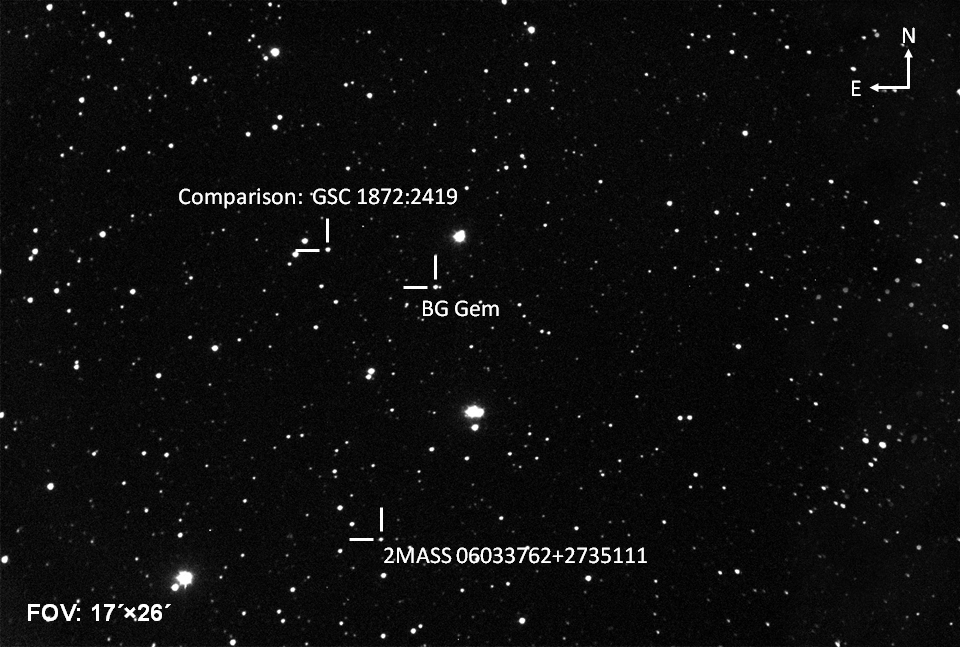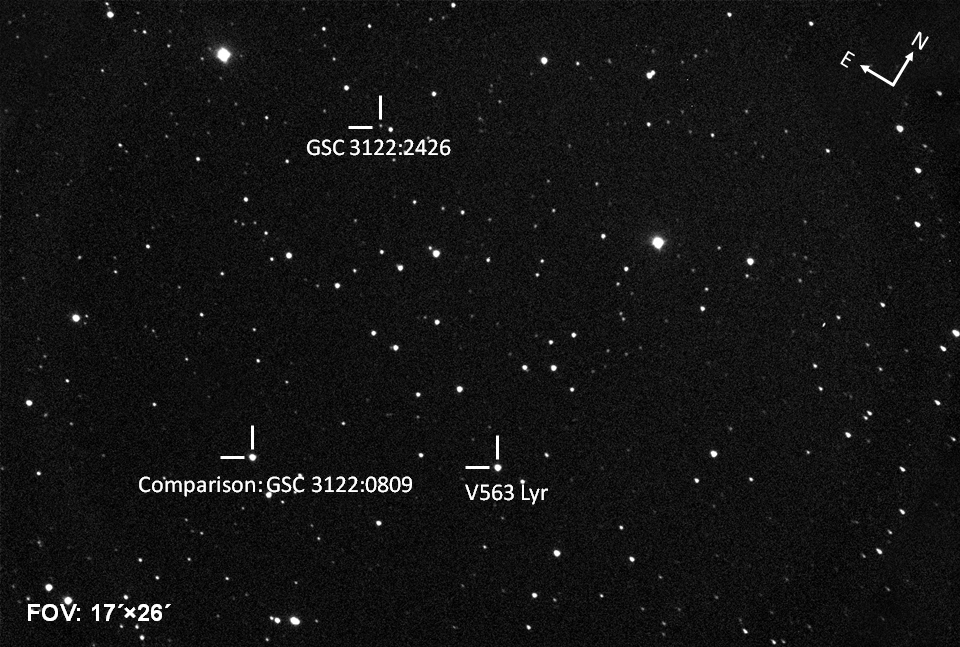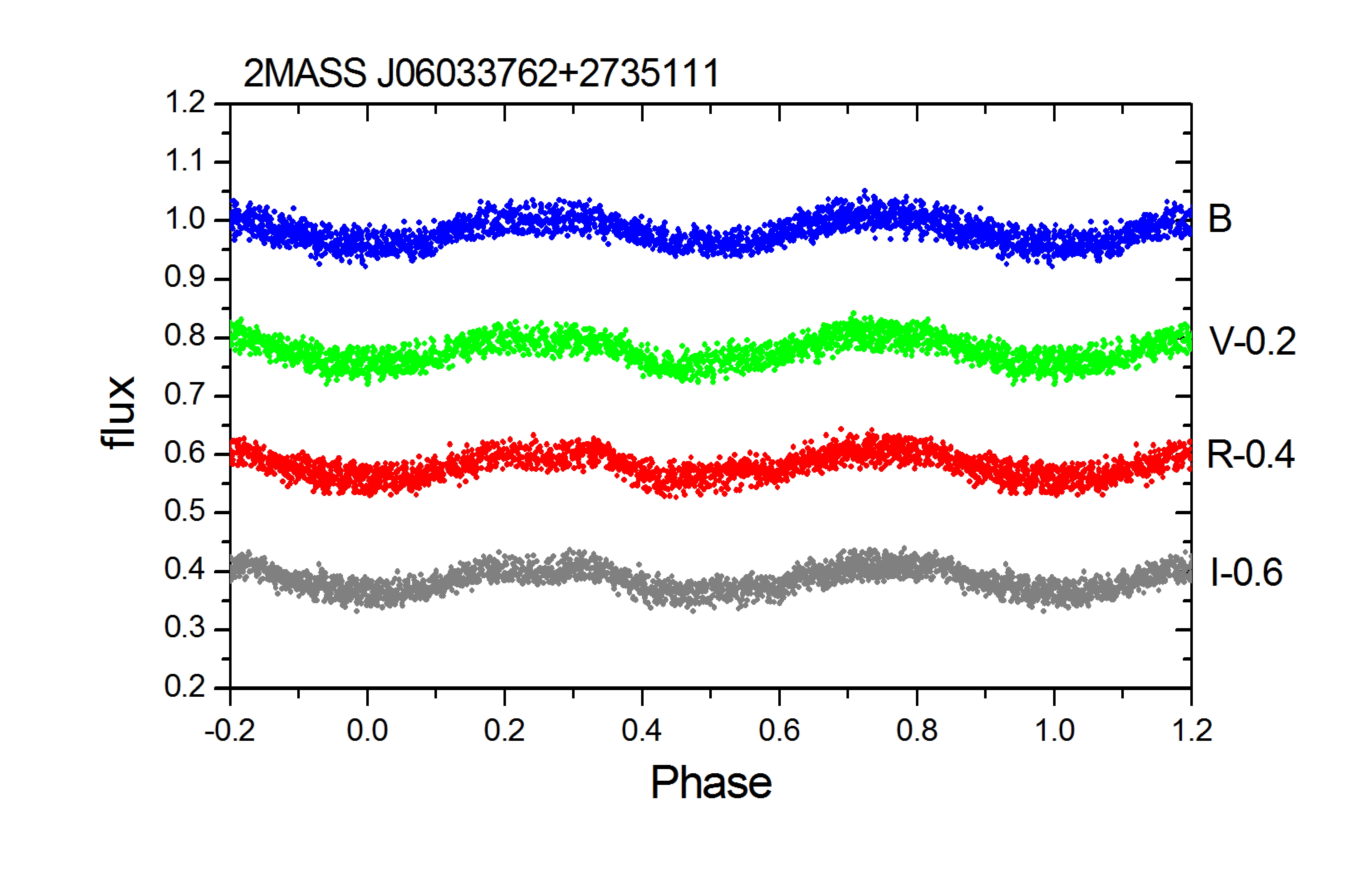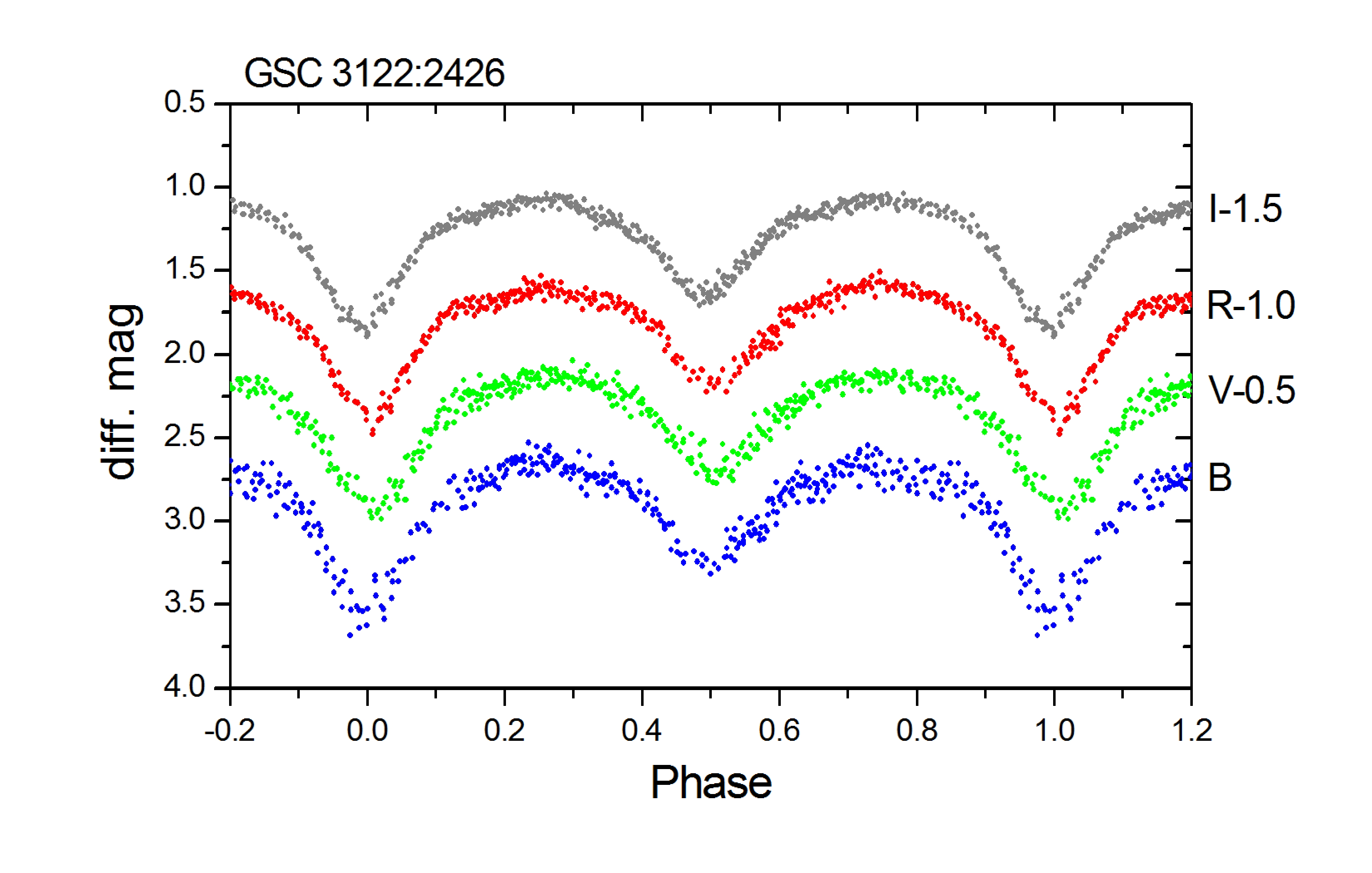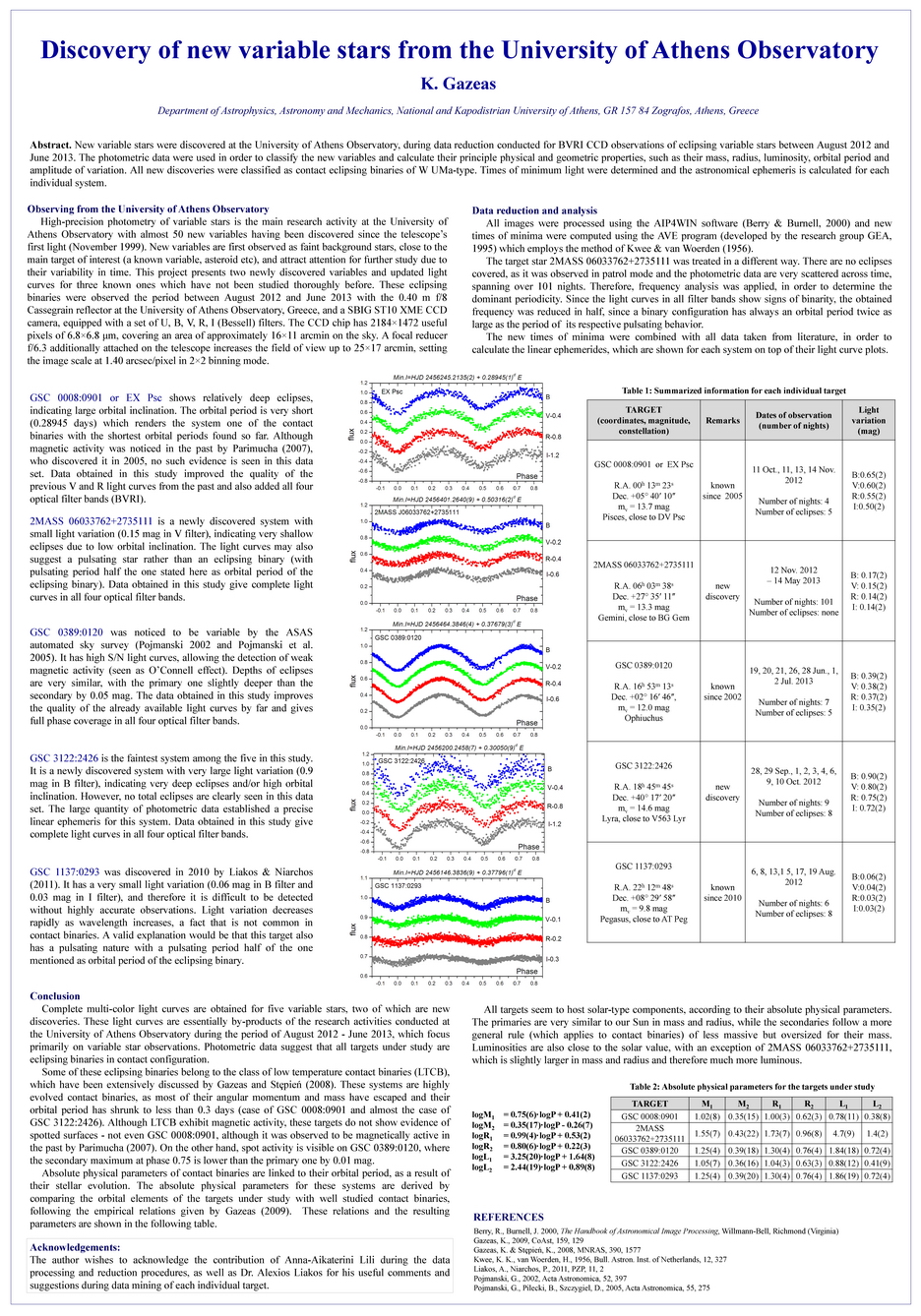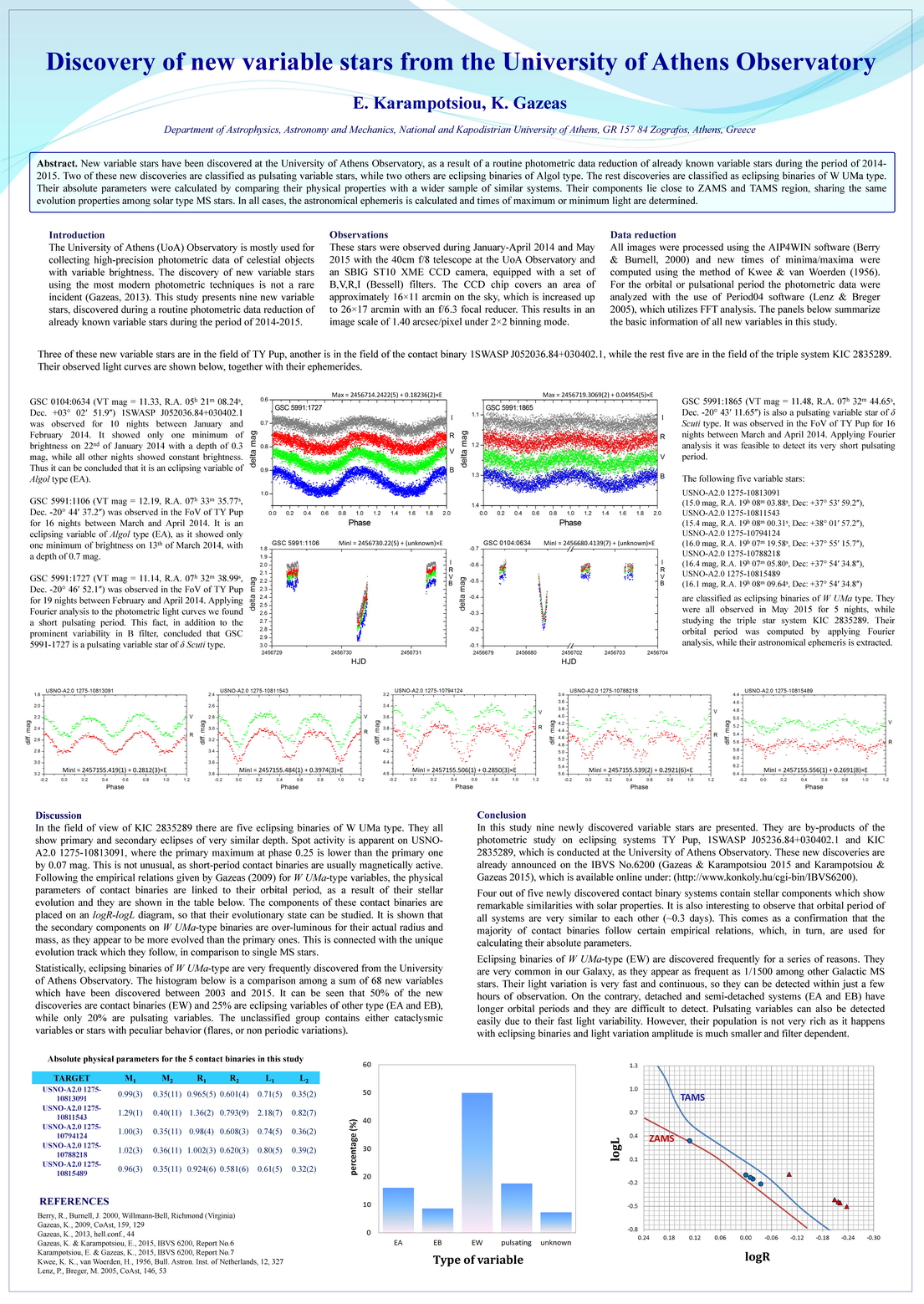Search for Variable Stars - SeVaS Project
High-precision photometry of variable stars is the main research activity at the University of Athens Observatory. Among a wide range of variable stars, eclipsing binaries are the most commonly observed targets in a daily basis. Frequently, faint background stars, close to the main target of interest (a known variable, asteroid etc), appear to be variable in time, attracting the attention and seeking for further study.
The systematic Search for Variable Stars (SeVaS) Project is a research program, which is offered since 2013 as diploma thesis to undergraduate students at Physics Department. Thanks to their valuable help and many hours of dedicated data reduction it was possible to discover several new variable stars among the archival data taken from the Univerity of Athens Observatory database. A small sample of such discoveries is shown in the plots below.
In total, about 75 new variables were discovered up to date as by-product during image reduction since the beginning of the observatory's operation (November 1999). The first target ever discovered from our facilities is the eclipsing binary GSC 00830:00323 at the constellation of Virgo (Gazeas & Niarchos, 2004, IBVS 5500, 15).
Sample light curves from variable stars (shown in corresponding fields of view), which are discovered at the University of Athens Observatory in the frame of the wider project of search for variable stars, offered as diploma thesis to undergraduate students at Physics Department.
Eclipsing binaries of W UMa-type (EW) are discovered frequently for a series of reasons. They are very common in our Galaxy and their light variation is very fast and continuous, so they can be detected within just a few hours of observation. On the contrary, detached and semi-detached systems (EA and EB) have longer orbital periods and they are difficult to detect. Pulsating variables can also be detected easily due to their fast light variability. However, their population is not very rich and light variation amplitude is much smaller and filter dependent. The histogram below shows the discovery frequency (in percentage) of each type of variable.
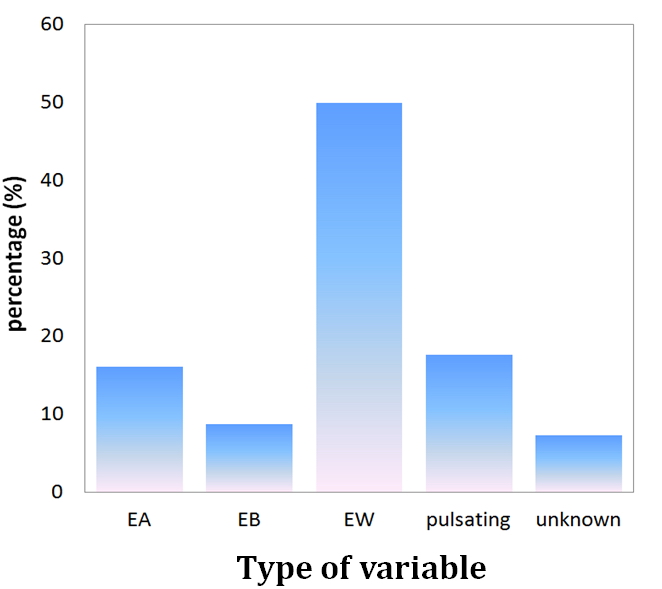
Scientific announcements released after the results of this search are:
People involved in this project are:
